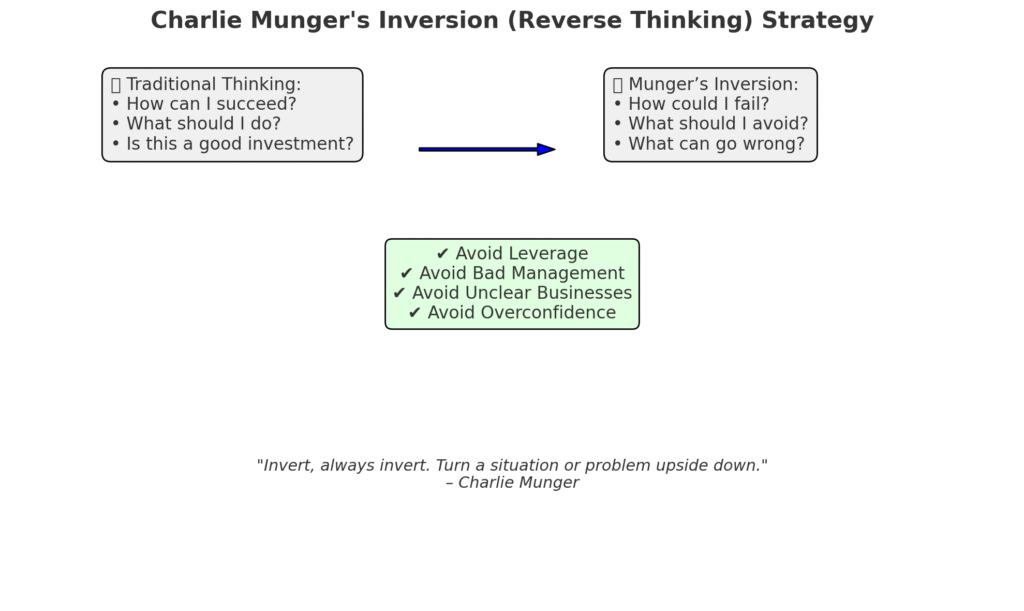Charlie Munger famously used reverse thinking, often called inversion, as a core mental strategy.
🔄 What Is Reverse Thinking (Inversion)?
Instead of asking: “How can I succeed?”,
Ask: “What would cause me to fail?”
— then avoid those things.
🧠 Munger’s Reverse Strategy in Action:
1. Avoiding Stupidity > Chasing Genius
- Munger believed it’s easier to avoid being stupid than to try to be brilliant all the time.
- Quote: “It is remarkable how much long-term advantage people like us have gotten by trying to be consistently not stupid.”
2. Inverting Investment Decisions
- Instead of asking: “Is this company a great buy?”
He would also ask:
“Under what conditions would this investment go wrong?” - He’d look for:
- Overhyped growth
- Poor management
- Debt risk
- Declining industry
- Conflicts of interest
3. Life Strategy Inversion
- Munger often asked: “What would a miserable life look like?”
Then avoided those behaviors:- Addictions
- Toxic people
- Arrogance
- Laziness
🧩 Example in Investing:
Instead of only asking:
- ✅ “What makes a great business?”
He would ask:
- ❌ “What kills businesses?”
Answer:
- Too much debt
- Loss of pricing power
- Bad capital allocation
- Disruption by new tech
Avoiding these risks becomes the investment strategy.
🧭 Summary of Reverse Strategy (Inversion Thinking)
| Traditional Question | Munger’s Inverted Question | Benefit |
|---|---|---|
| How can I succeed? | How can I fail? | Avoids preventable disasters |
| What should I do? | What should I avoid doing? | Clears out bad options first |
| Is this a good stock? | What would ruin this investment? | Detects hidden risk early |
Final Quote:
“Invert, always invert. Turn a situation or problem upside down. Look at it backward.”
— Charlie Munger



